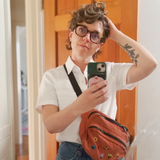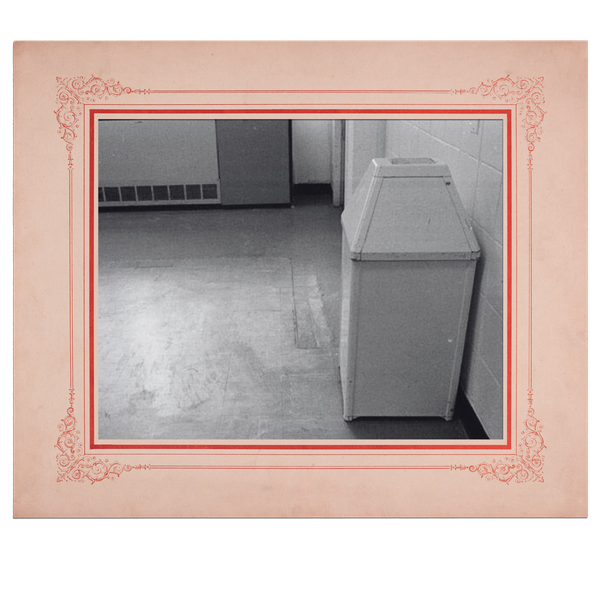I have breast cancer.
and other sentences I never wanted to write.
A core sample is a cylindrical section of (usually) a naturally occurring substance. Most core samples are obtained by drilling into the substance.
The hole made for the core sample is called the “core hole.” In the coring process, the sample is pushed more or less intact into the tube. Removed from the tube in the laboratory, it is inspected and analyzed by different techniques and equipment depending on the data desired.
A core sample which cannot be related to its context (where it was before it became a core sample) has lost much of its benefit. The identification of the core hole is critical. For example, if a core hole is in a tree trunk, dendrochronologists always try to include a bark surface in their samples.
Core samples can be taken of living things, including human beings, for microscopic examination to help diagnose diseases. - pieced together from Wikipedia
I have breast cancer. I know I have breast cancer because a doctor used a cannula biopsy needle to pierce a hole in my left breast. And then she guided a core biopsy needle through that hole and into a lesion. She collected four core samples. Each sample was labeled with my name and age. She left a marker inside the lesion. The labels and marker protected the context of the core sample.
A pathologist analyzed the core samples and discovered I have invasive ductile carcinoma. A second pathologist reviewed the data and concurred with the first pathologist. A sample of the core samples were selected for further testing. Another pathologist determined my invasive ductile carcinoma is triple-negative, which means it is only responsive to chemotherapy. A second pathologist reviewed the data and concurred with the third pathologist.
I found out I have breast cancer through a UC Health push notification. It dinged while I waited in line at In-n-Out with my husband and my two youngest children. Wildly, for a just moment, it seemed possible they’d sent the test result to the wrong person. I am only 40. The lesion was considered low-suspicion. I have no genetic mutations that make breast cancer more likely. But the pathology report included the carefully collected context. And so I’d accepted I had cancer before Riley finished placing our lunch order. I told him while we waited for our food.
We didn’t tell our children until we had more context.
More Context
Triple-negative breast cancer is rare. Only about 15% of breast cancers are triple-negative. And historically, it has been harder to cure than other breast cancers. Often, triple-negative breast cancer is detected much later than other breast cancers. Triple negative breast cancer is more likely to show up in younger women, especially those under 40. Breast cancer screenings don’t start until 40 in the United States. The cancer is often unobserved until its significantly expanded its reach.
I turned 40 last February. My triple-negative breast cancer was discovered during my first series of mammograms and ultrasounds. The tumor is the size of a smallish pea. I still can’t feel it when I press my fingers into my left breast. I am grateful others were able to observe what I cannot.
Triple-negative is not receptive to treatments that target estrogen, progesterone or Her2, a protein found on some breast cancer cells. It must be treated with chemotherapy, and sometimes, immunotherapy. The treatments for triple negative breast cancer are more brutal than other breast cancer treatments. They are also very effective. Too often our life sustaining options are brutal and ineffective. So really, what more could I ask for?
As the doctors poke and prod at me, I try to help them, and me, remember my context. My name is Meg. I have three daughters, Margaret Zuzu, Viola Honey, Brontë Fig. They are so young. I will do anything to stay here with them.
So Come On, I Can Take it, Give Me Everything You've Got
This morning, I go in for a bilateral mastectomy. A doctor will remove all my breast tissue. She will cut away both my nipples and lymph nodes connected to my left breast. Another doctor will line my breast skin with a matrix woven of cadaver skin, she will sew in tissue expanders. I think of them working over me, cutting and stitching, and I thank god for women’s work. Six weeks later, I’ll start an AC-T chemotherapy regimen, a dose of chemotherapy every two weeks for twenty weeks.
Earlier this week, my oldest daughter sent me Florence + The Machine's latest single. Mom, you are going to love this song. She’s right I do. I’m listening to it right now, in the minutes before I get up from bed and this all begins,
And the light coming in the window, just so. And the wind through my fingers, the only God that I know. And it does not want me on my knees to believe. Head high, arms wide, Aching, Aching, Aching. And alive. And Alive. So I don't have to be worthy. I no longer try to be good. It didn't keep me safe, like you told me it would. So come on, tear me wide open, 'til I'm losing my mind, 'til I cannot contain it. So come on, come on, I can take it. Give me everything you got. What else? What else? What else? What else?


